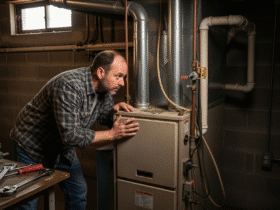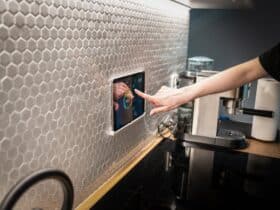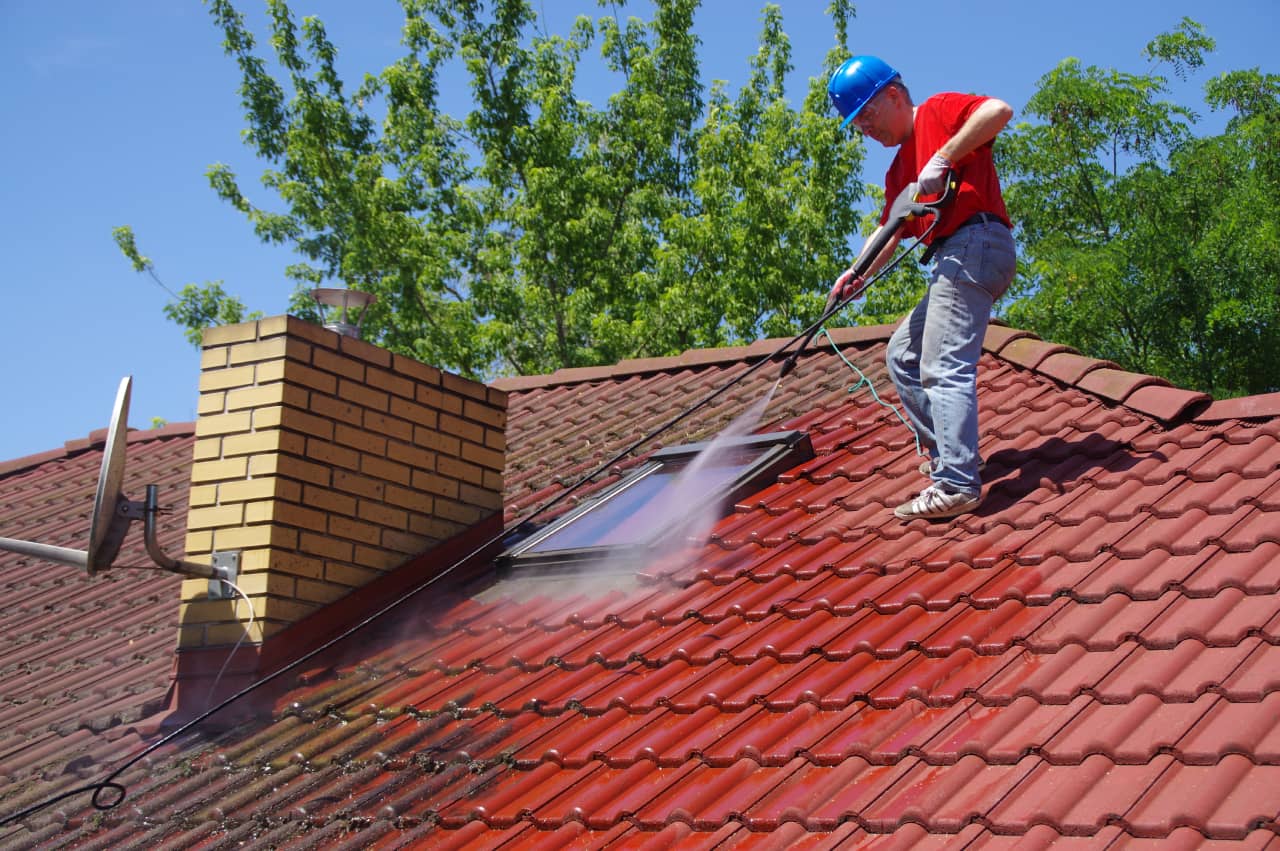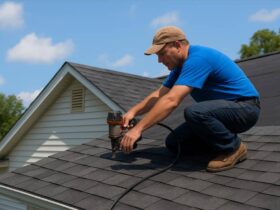Removing roof stains can be challenging. To apply the most suitable solutions, you’ll need to know the causes. Generally, roofs become discolored because of rust, tree debris, algae growth, and roof age. Since different reasons may require diverse solutions, you need to know the appropriate ways of eliminating roof stains. That way, you’ll maximize your effort, money, and time.
Suppose you’re looking for ways to clean your roof stains for the first time. You can start by checking out various tips and tricks to get rid of the discoloration effectively. Once you’re familiar with the technical know-how, you’ll be to identify issues, such as algae growth and excess moisture, and make your roofing system more durable and aesthetically pleasing. Read on to learn about several ways to clean roof stains.
1. High-Pressure Power Washing
If your roof has hardened and thick stains, you may consider high-pressure power washing. To make the most of this method, you may need dependable power washing services, such as As New Again Pressure Washing or others. Using washers with higher pressure output and water volume is better in most cases. Though they’re more expensive than lower-pressure units, they’re effective in removing moss, mildew, and mold.
You can pair this method with the manual removal of algae and flaking paint for the best results. Additionally, consider power washing your roofs during cool or overcast weather. This way, you can apply other solutions, such as siding and roof repairs, which will be more challenging during the wet season.
Take the following factors into account before you decide to power-wash your roof or apply a low-pressure method:
- Roof Composition
If your roof shingles are durable enough and made of a material, such as metal and concrete, you can go for power washing. It’ll be easy to eliminate debris, old flaking paint, algae, and rust. On the other hand, roofs that are made of wood shake, asphalt shingle, and clay tiles aren’t ideal for power washing since they’re prone to chipping and breakage. - Nozzle Settings
Apart from the roof composition, check the different nozzles appropriate for a roof type. For generally complex roofs, you can opt for straight jet nozzles, as they’re capable of high-pressure water. Fanned types are ideal for less durable roofs. The red 0-degree nozzle, which features a small but powerful water jet, is suitable for concrete and hard metal. It can remove difficult stains, including tree sap, glue, and mildew. On the other hand, the green 25-degree nozzle is fit for washing most surfaces. It can get rid of mud, leaves, and debris and clean concrete, brick, and gutters. - Wash Direction
Go for a direct wash to achieve better coverage and higher pressure. You can move your nozzles sideways as well to direct the dirt and debris toward gutters and downspouts.
2. Low-Pressure, Chemical-Free Power Washing
A low-pressure and chemical-free power washing method is an eco-friendly option. Apart from using a low-pressure water jet, you can add solutions that don’t contain waterway-polluting chemicals, phosphates, and chlorine bleach.
With a low-pressure power washer, you’ll be able to clean off the dirt and debris on your roof shingles. After using low-pressure washing, apply non-abrasive roof soap and shampoo to wash your roofs until the shingles flake off. Lastly, rinse the solutions with low-pressure power water or repeat the earlier steps for the best results.
While searching for an eco-friendly cleaning solution, look for the following qualities:
- generally organic
- chlorine-free
- easy to rinse
- easy to apply
3. Chlorine Bleach Roof Cleaning

Select a chlorine-rich solution if your roof stains remain stubborn after several roof-cleaning applications. You’ll need to pressure-wash your roof first before applying the chemicals in most cases. Take note, though, that the results of these solutions aren’t instant, so you’ll have to be a bit patient. Moreover, you can apply the chemicals during dry weather.
Most of the time, the stains may continue to persist even after the chemical applications, so you’ll have to follow another cleaning schedule. You can combine the bleach formula with other chemicals, such as sodium hydroxide and trisodium phosphate. Some chemical applications may require rinsing while others need direct application.
4. De-Mossing Spray
One of the go-to options for moss removal on your roof is de-mossing. Since mosses can cause severe roof damage if neglected, such as clogs in gutters and a leaky roof, spraying a non-corrosive and eco-friendly anti-moss spray will be an effective method.
During the cleaning process, spray on the mossy sections of your roof directly. Avoid power washing these areas, as the pressured water will reach the shingles’ undersides, causing further damage.
You may need to manually scrape the mosses and the dirt and debris for better results. But you have the option of waiting for the rain to rinse the dirt and debris off roof shingles or use a low-pressure washer to clean the area.
5. Professional Roof Cleaning Services
While you can remove the roof stains the DIY way, hiring the pros is still a good option if you have the budget to do so. Generally, these services employ different methods to get rid of the stains. Before you hire a roof cleaning company, select the one that offers various tools, such as scrapers and power washers, as well as eco-friendly solutions.
If your roof structure is too steep and removing the roof stains may require special equipment, such as safety harnesses, a roof cleaning contractor will be the best decision. Apart from safety, professionals are able to provide suitable solutions and prevent future roof issues because of their extensive experience and knowledge. For example, they can identify minor issues on your roof during the cleaning process and address them immediately.
Wrapping Up
Roof stain removal is necessary to keep your roof and house well-maintained. Since roofing issues have different causes, you’ll need to have a proper roof assessment before choosing a solution. All these methods are effective in eliminating stains, but you have to make sure you choose the most appropriate solution to prevent further damage.









